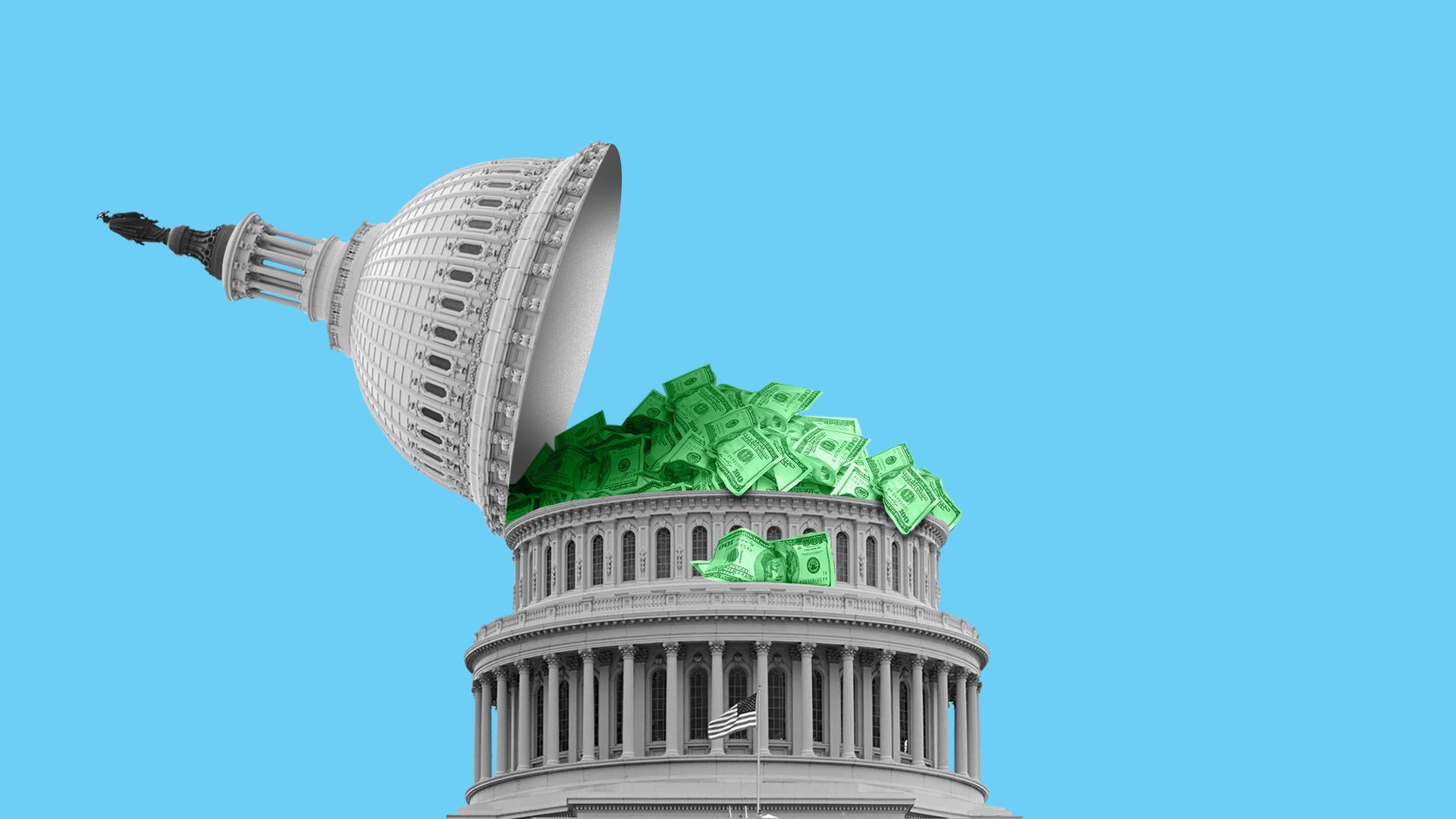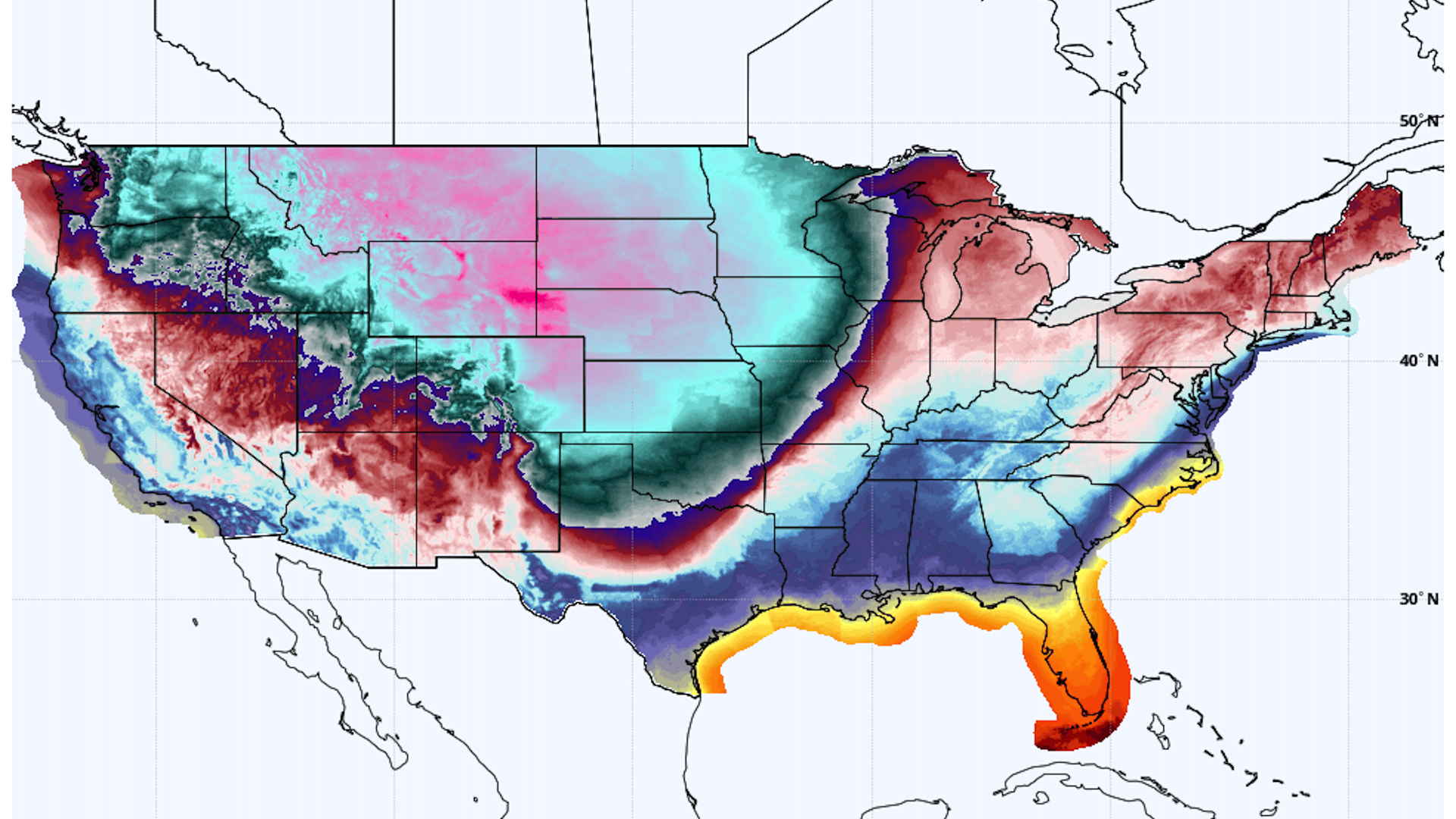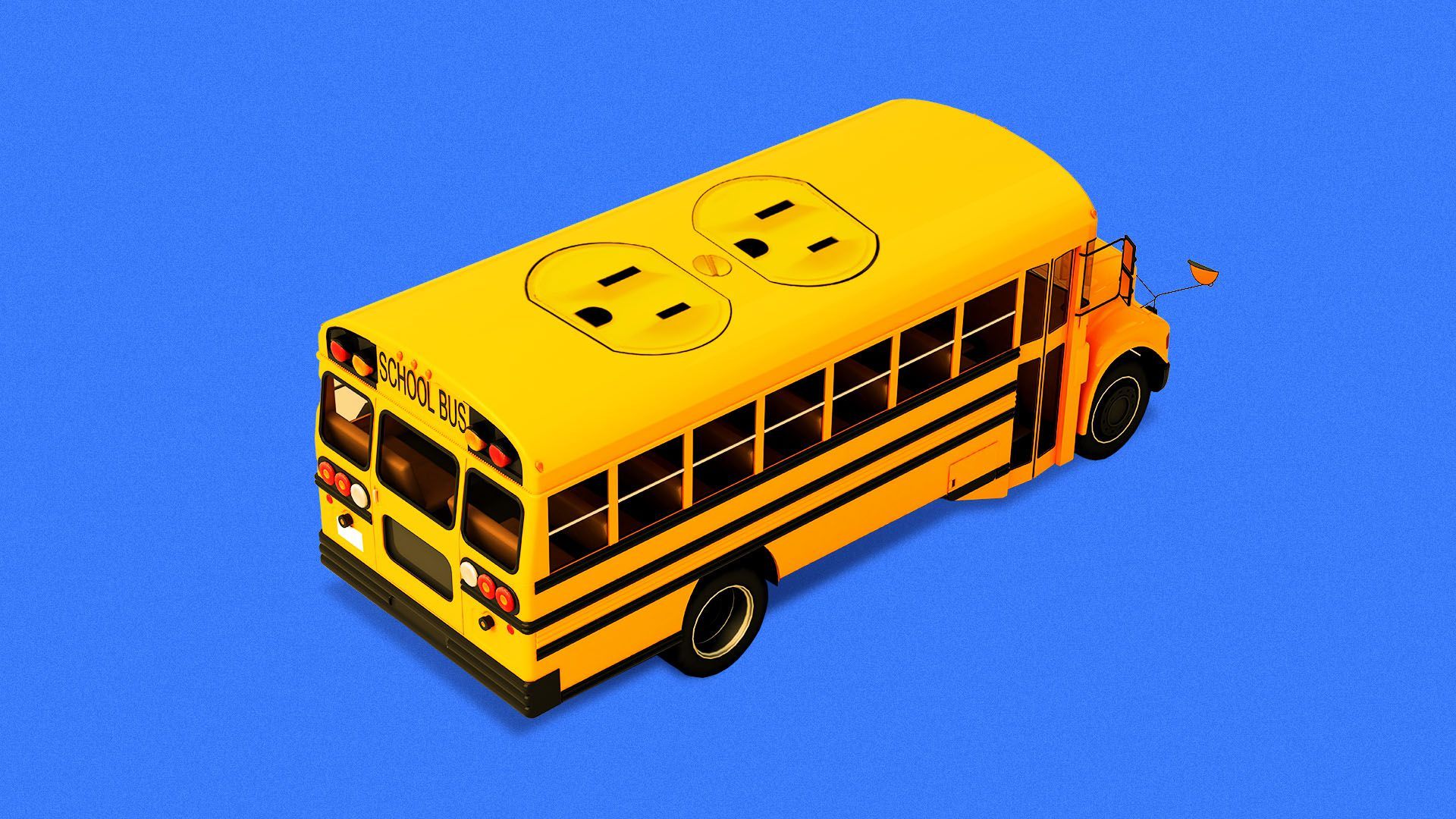| |
| |
| |
| Presented By ConocoPhillips |
| |
| Axios Generate |
| By Ben Geman and Andrew Freedman · Dec 21, 2022 |
| 🎉 Let's do this! Today's newsletter has a Smart Brevity count of 1,190 words, 4.5 minutes. 🧹 Housekeeping note: This is our last edition until 2023! Happy holidays and we'll see you on Jan. 3. Thanks for reading this year. 🎶 At this moment in 2006, Beyoncé ruled the Billboard Hot 100 with an irresistible cut that 2022's final intro tune... |
| |
| |
| 1 big thing: Oil's evolving seascape |
 Data: U.S. Energy Information Administration; Chart: Tory Lysik/Axios Visuals The final days of the year are bringing fresh data points that underscore a seismic 2022 story: the reshuffling of the global oil-and-gas trade spurred by Russia's attack on Ukraine, Ben writes. Driving the news: Reuters has a good look at why U.S. crude exports are hitting fresh records, noting the U.S. might even become a net crude exporter next year. - "Russia's invasion of Ukraine has spurred new demand for U.S. energy and should push oil exports above imports late next year assuming shale output accelerates," Vortexa analyst Rohit Rathod tells Reuters.
- "Assuming shale output accelerates" is doing some work, given stalled output growth, but the export rise is unmistakable (see above).
- Quick reminder: The U.S. is already a net petro exporter when you include refined products.
Meanwhile, months of sanctions to isolate Vladimir Putin appear slated to weaken Russia's still-considerable petro-might. - The latest steps — the EU's ban on seaborne crude and the G7 price cap — are new.
- But Bloomberg reports Russia's tanker exports "collapsed in the first full week of [G7] sanctions targeting Moscow's petroleum revenues."
What we don't know: How much Russia's huge production is ultimately affected. The most recent outlook from the Energy Department's analysis arm projects most Russian barrels shunned by Europe will go elsewhere. But they also see Russian production falling in 2023. The big picture: Needless to say the gas landscape has shifted too, with Europe becoming thirstier for LNG from the U.S. and elsewhere to replace Russian supplies. "I think 2022 was the year in which the world was awoken from a collective complacency about energy security," said Columbia University's Jason Bordoff on the latest podcast from Columbia's energy think tank. What we're watching: In 2023 and beyond, how the U.S. navigates twin goals of curbing fossil fuels to battle climate change while keeping the geopolitical leverage that petro exports provide. |
    |
| |
| |
| 2. Congress rebuffs Biden on climate aid |
 |
|
| Illustration: Aïda Amer/Axios |
| |
| Congress is set to consider a mandatory government funding bill that offers a mixed bag for U.S. climate action, Jael Holzman writes. Why it matters: The bill represents the best Democrats might get with Senate Republicans before the GOP takes control of the House and starts aggressively targeting environmental programs. Driving the news: Lawmakers yesterday unveiled a 4,155-page funding package that'll keep the government ticking for another year, but it comes with some lumps of coal for climate activists. - Democrats failed to secure ample new funding for international climate finance, something Biden promised the world he'd get at the recent COP27 summit in Egypt.
- Climate finance funding was boosted by only $900,000. Given inflation this represents "a reduction in real terms," said Joe Thwaites, an advocate with the Natural Resources Defense Council.
- There's also a rider to block the government from making a new rule protecting North American right whales, a carbon-storing species in peril from warming oceans.
Yes, but: There are some small climate gains in the funding bill, like a new voluntary Agriculture Department program to verify carbon sequestration credits for farmers (Agri-Pulse). - The bill would also give hundreds of millions more in annual funding to agencies like EPA and the Interior Department, though the increase may be muted by high inflation.
|
    |
| |
| |
| 3. The Post Office's electric shift |
 |
|
| Illustration: Sarah Grillo/Axios |
| |
| The U.S. Postal Service is vowing to deploy over 66,000 electric vehicles by 2028, greatly expanding prior plans that critics called too timid, Ben writes. Why it matters: It will be a big and very visible sign of the electrification of government and corporate fleets. It comes as private giants including Amazon — which has already started deploying Rivian vans — are beginning to go electric. The intrigue: The plan resolves a "long-running dispute with the Biden administration over how quickly the agency should clean up its fleet of iconic white, red and blue mail trucks," the NYT reports. Zoom in: The plan announced yesterday by the USPS will represent a $9.6 billion investment, including $3 billion via the new climate law. The 66,000 will be over half the expected 106,000 delivery vehicle acquisitions between now and 2028. "Acquisitions delivered in 2026 through 2028 expected to be 100% electric," USPS said. The Washington Post has more. |
    |
| |
| |
| A message from ConocoPhillips |
| The Willow Project |
| |
 |
| |
| ConocoPhillips is working with Alaskans to ensure the Willow project is a strong example of an environmentally and socially responsible development. Willow offers extensive public benefits, including local revenues to support Alaska Native communities. Learn more. |
| |
| |
| 4. Arctic blast begins, bomb cyclone takes shape |
 |
|
| Map of forecast wind chill readings on Dec. 22, showing the sharpness of the cold front across the Central U.S. Image: Weatherbell.com |
| |
| An unusually intense Arctic cold front that will send temperatures tumbling by up to 40°F in a couple of hours is beginning its march south and east this morning, likely reaching Colorado this evening, Andrew writes. Why it matters: This front, along with an accompanying rapidly intensifying storm known as a bomb cyclone, will engulf the entire Lower 48 states east of the Rockies in extreme weather through the weekend. Context: As cold as temperatures will get, winter is the fastest-warming season for most of the U.S., and it's unlikely many all-time cold records will be set. By the numbers: minus-70°F: Coldest wind chill that is forecast for this event, in eastern Wyoming, as frigid air combines with howling winds. - Minus-5°F to minus-10°F: Forecast high temperature in Denver on Thursday, in what may be the city's coldest day in 32 years, per the National Weather Service.
- 177 million: The number of people across the Lower 48 states under winter weather warnings, watches and advisories for extreme cold, heavy snow and related hazards.
- 26 states: The area covered by wind chill warnings and watches, from the Canadian border to Texas Gulf Coast.
What they're saying: "This will not be your average cold front," NWS said in a forecast discussion. The bottom line: The Arctic outbreak and bomb cyclone, the latter of which will intensify over the Great Lakes Thursday, are poised to cause havoc for travelers trying to get home for the holidays. |
    |
| |
| |
| 5. EV business notes: QuantumScape, Lucid, Tesla |
| 🔋Battery startup QuantumScape said it has begun shipping prototypes to automakers for testing, Ben writes. - Why it matters: It's looking to commercialize solid-state tech that holds the promise of more energy density, durability and safety.
- Zoom in: "QuantumScape didn't name the automakers receiving prototypes, but...Volkswagen is a longtime investor," CNBC notes. They also caution that commercial production is years away.
💰Luxury EV maker Lucid Motors said it completed a $1.5 billion equity offering, including roughly $915 million via existing backer Saudi Arabia's sovereign wealth fund. 📉 Exxon has moved ahead of Tesla in market capitalization for the first time since 2020 "as investors sell high-growth stocks and buy up value stocks in the energy sector," Bloomberg reports. |
    |
| |
| |
| 6. The falling barriers to electrifying school buses |
 |
|
| Illustration: Sarah Grillo/Axios |
| |
| Federal and state governments are practically giving away electric school buses, and if your local district doesn't have its hand up yet, it should. The math is a no-brainer, Axios' Joann Muller reports. Why it matters: Exhaust from diesel buses makes kids sick and curbs cognitive development. Plus, diesel buses spew CO2 emissions. The big picture: Electric models are a cleaner, safer alternative, and they're cheaper to operate — it costs about 14 cents a mile for electricity compared to 49 cents per mile for diesel fuel, per Blue Bird, a leading school bus manufacturer. The catch: An electric school bus costs $350,000 to $450,000 and most districts can't afford the upfront expense. - But a bunch of new government incentives makes replacing aging diesel fleets an easy call.
- They include a five-year, $5 billion Clean School Bus Program, approved in November 2021 as part of the infrastructure law.
Read the whole story |
    |
| |
| |
| A message from ConocoPhillips |
| Advancing Alaska's economic and energy future |
| |
 |
| |
| The Willow project combines state-of-the-art technology and a strong commitment to environmental stewardship. The benefits: It will produce much needed domestic energy and create jobs for skilled union labor. We are proud to produce the energy America needs. Learn more. |
| |
| 📬 Did a friend send you this newsletter? Welcome, please sign up. 🙏 Thanks to Mickey Meece and David Nather for edits to today's newsletter. We'll see you in the new year! |
 | | Your personal policy analyst is here. | | |
No comments:
Post a Comment